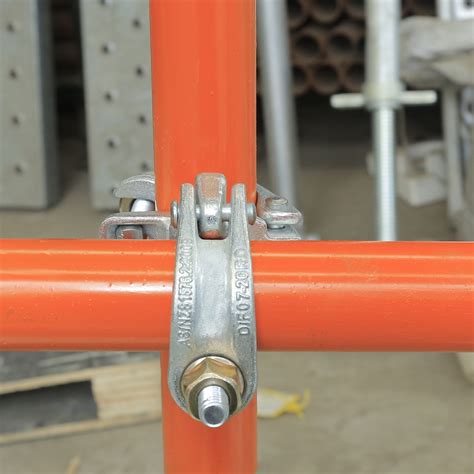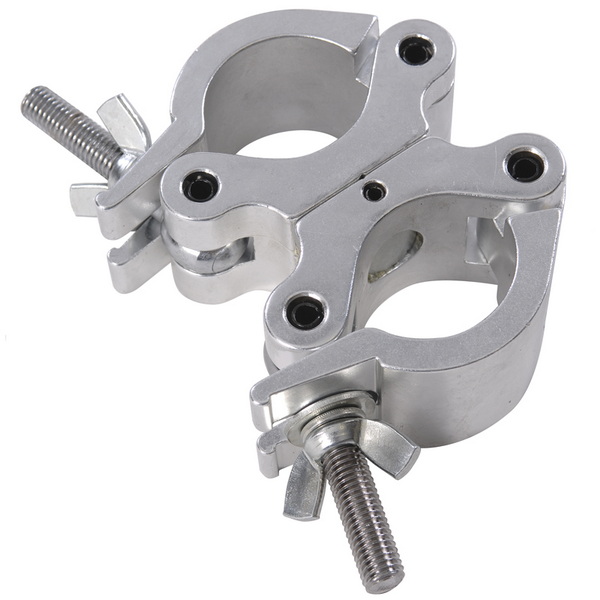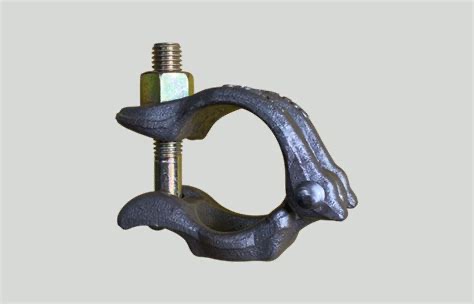Content Menu
● Introduction to SGS Scaffolding Couplers
● Importance of Standards for Scaffolding Couplers
● Key Standards Met by SGS Scaffolding Couplers
>> 1. BS 1139 (British Standard)
>> 2. EN 74 (European Standard)
>> 3. AS/NZS 1576 (Australian/New Zealand Standard)
>> 4. ISO Standards
>> 5. Other Regional Standards
● SGS Testing Procedures for Scaffolding Couplers
● Benefits of Using SGS Certified Scaffolding Couplers
● Examples of SGS Certified Scaffolding Couplers
● How to Verify SGS Certification on Scaffolding Couplers
● Maintenance and Inspection of SGS Scaffolding Couplers
● Conclusion
● FAQ
>> 1. What international standards do SGS scaffolding couplers comply with?
>> 2. How does SGS certify scaffolding couplers?
>> 3. Why is SGS certification important for scaffolding couplers?
>> 4. Can SGS certified couplers be used globally?
>> 5. How can I verify the authenticity of SGS certification?
SGS scaffolding couplers are widely recognized for their quality and compliance with international safety and performance standards. As critical components in scaffolding systems, couplers must meet rigorous testing and certification requirements to ensure structural integrity and worker safety. This comprehensive article explores the various standards that SGS scaffolding couplers comply with, their significance, testing methods, and how these standards impact the selection and use of couplers in construction projects.

Introduction to SGS Scaffolding Couplers
Scaffolding couplers are mechanical fittings designed to connect scaffold tubes securely. They come in various types such as fixed couplers, swivel couplers, sleeve couplers, and putlog couplers. SGS (Société Générale de Surveillance) is a globally recognized certification body that tests and certifies scaffolding components to ensure they meet international quality and safety standards.
SGS certification is a mark of trust that the product has undergone independent, rigorous testing and meets or exceeds the applicable standards, ensuring safety and reliability on construction sites.
Importance of Standards for Scaffolding Couplers
Standards ensure that scaffolding couplers:
- Provide sufficient load-bearing capacity.
- Maintain structural stability under various conditions.
- Resist corrosion and wear.
- Are manufactured with consistent quality.
- Comply with safety regulations to protect workers.
SGS certification confirms that couplers have undergone independent testing and meet or exceed these requirements. This certification is vital for contractors, engineers, and safety officers who must comply with local and international regulations.
Key Standards Met by SGS Scaffolding Couplers
1. BS 1139 (British Standard)
- Applies to steel scaffolding tubes and fittings.
- Specifies mechanical properties, dimensions, and performance.
- SGS tests couplers to ensure compliance with load capacity, slip resistance, and durability.
- Most SGS certified couplers conform to BS 1139 requirements.
BS 1139 is one of the most widely recognized standards globally, ensuring that scaffolding components meet stringent safety and performance criteria.
2. EN 74 (European Standard)
- EN 74-1 and EN 74-2 cover couplers for tube and coupler scaffolding.
- Defines classes of couplers (Class A and Class B) based on load and deformation limits.
- SGS certification verifies couplers meet EN 74 standards for strength and safety.
- Includes tests such as tensile strength, slip resistance, and fatigue.
EN 74 is critical in Europe and many other regions, providing a comprehensive framework for coupler safety and performance.
3. AS/NZS 1576 (Australian/New Zealand Standard)
- Specifies requirements for scaffolding components including couplers.
- SGS tests ensure compliance with mechanical properties and corrosion resistance.
- Important for projects in Australia, New Zealand, and regions adopting these standards.
This standard ensures that scaffolding couplers used in these regions meet local safety and durability requirements.
4. ISO Standards
- ISO 9001: Quality management system certification for manufacturers.
- ISO 2859: Sampling procedures for inspection.
- SGS ensures that coupler manufacturing processes comply with ISO standards for quality and consistency.
ISO certifications guarantee that the manufacturing process is controlled and consistent, leading to reliable products.
5. Other Regional Standards
- JIS (Japanese Industrial Standards) for couplers used in Japan.
- ASTM standards for scaffolding components in the USA.
- SGS testing can cover these standards depending on market requirements.
SGS's global reach allows it to certify scaffolding couplers to various regional standards, facilitating international trade and compliance.

SGS Testing Procedures for Scaffolding Couplers
SGS performs rigorous testing to verify coupler performance:
- Load Testing: Verifies coupler strength under tensile and compressive forces.
- Slip Resistance: Ensures couplers do not slip under load.
- Fatigue Testing: Simulates repeated loading cycles to assess durability.
- Corrosion Testing: Assesses resistance to rust and environmental degradation.
- Dimensional Inspection: Confirms coupler dimensions meet standard specifications.
- Material Analysis: Verifies chemical composition and mechanical properties.
These tests ensure that couplers can withstand the stresses encountered in real-world scaffolding applications, maintaining safety and structural integrity.
Benefits of Using SGS Certified Scaffolding Couplers
- Safety Assurance: Certified couplers meet stringent safety criteria.
- Quality Guarantee: Consistent manufacturing quality reduces failures.
- Regulatory Compliance: Helps meet local and international legal requirements.
- Durability: Enhanced corrosion resistance and mechanical strength.
- Market Acceptance: Widely accepted in global construction markets.
Using SGS certified couplers reduces the risk of scaffold failure, protects workers, and ensures compliance with legal and insurance requirements.
Examples of SGS Certified Scaffolding Couplers
- Forged Girder Swivel Couplers: Tested for load capacity and corrosion resistance.
- Drop Forged Fixed Couplers: Certified to BS 1139 and EN 74.
- Pressed Steel Couplers: SGS tested for mechanical and dimensional compliance.
- Beam Couplers: Certified for heavy-duty applications.
These examples demonstrate the variety of coupler types SGS certifies, covering a wide spectrum of scaffolding needs.
How to Verify SGS Certification on Scaffolding Couplers
- Look for SGS certification marks on product labels or packaging.
- Request SGS test reports or certificates from suppliers.
- Verify certification details on the official SGS website or databases.
- Ensure the certification covers the specific coupler type and standard.
Verification helps avoid counterfeit or uncertified products that could compromise scaffold safety.
Maintenance and Inspection of SGS Scaffolding Couplers
- Regularly inspect couplers for signs of wear, corrosion, or damage.
- Replace any couplers that fail inspection or show deformation.
- Maintain records of inspections and maintenance.
- Follow manufacturer and SGS guidelines for safe use.
Proper maintenance extends the lifespan of couplers and ensures ongoing safety.
Conclusion
SGS scaffolding couplers meet a range of internationally recognized standards including BS 1139, EN 74, AS/NZS 1576, and ISO certifications. These standards ensure that couplers provide the necessary strength, durability, and safety required for scaffolding applications worldwide. Choosing SGS certified couplers guarantees compliance with regulatory requirements and enhances the safety and reliability of scaffolding structures. Proper maintenance and verification of certification further ensure long-term performance and worker protection.

FAQ
1. What international standards do SGS scaffolding couplers comply with?
SGS scaffolding couplers commonly comply with BS 1139, EN 74, AS/NZS 1576, and ISO standards.
2. How does SGS certify scaffolding couplers?
SGS conducts rigorous mechanical, corrosion, dimensional, and material testing to verify compliance with relevant standards.
3. Why is SGS certification important for scaffolding couplers?
It ensures product safety, quality, and regulatory compliance, reducing the risk of scaffold failure.
4. Can SGS certified couplers be used globally?
Yes, SGS certification is internationally recognized and accepted in many construction markets.
5. How can I verify the authenticity of SGS certification?
Check for SGS marks on products, request test reports, and verify details through the official SGS website or authorized suppliers.






















